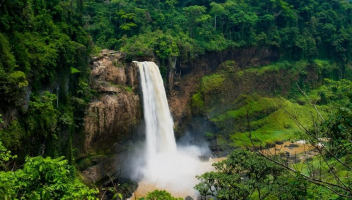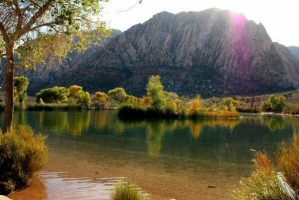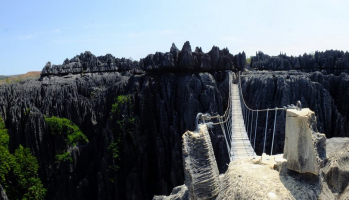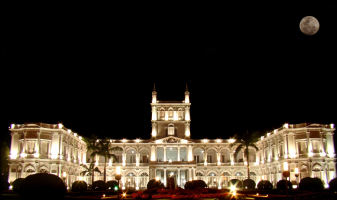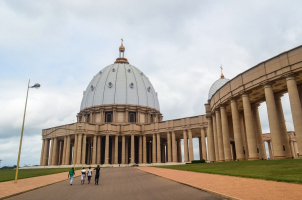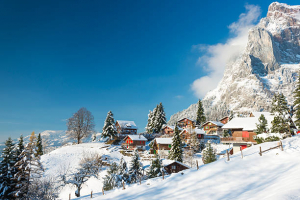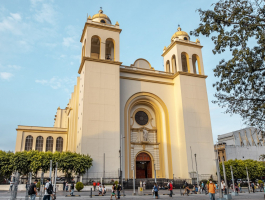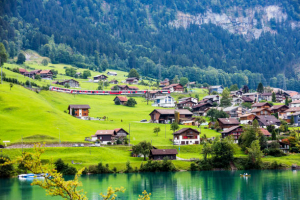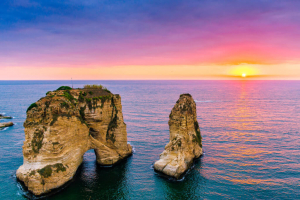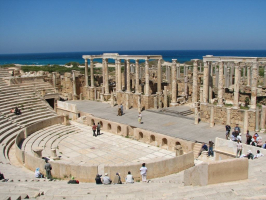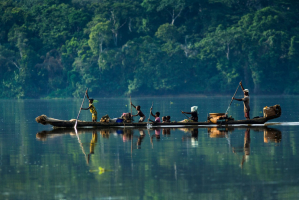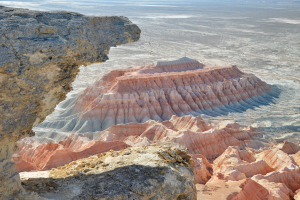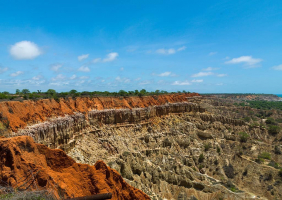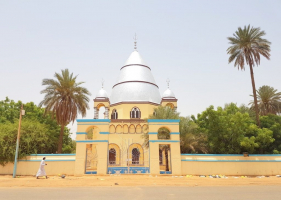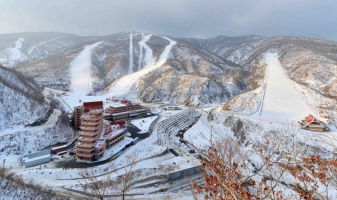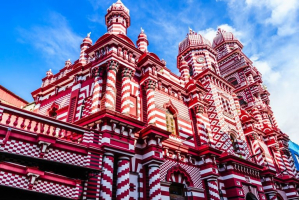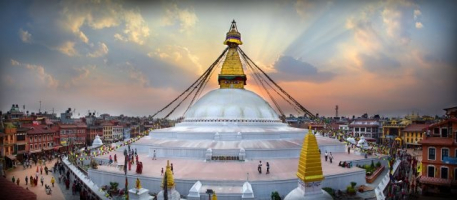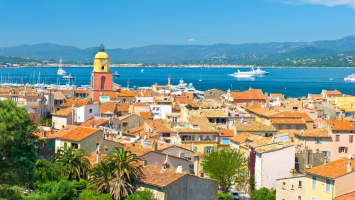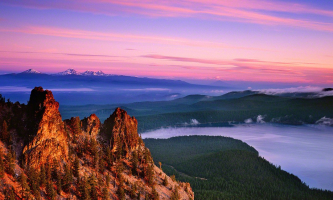Top 15 Best Places to Visit In Ljubljana
Ljubljana, the capital of Slovenia, is actually one of the smallest capitals in all of Europe, despite being the biggest city in the nation. But, what it might ... read more...lack in height and stature, it more than makes up for with its endearing, sophisticated, and cool atmosphere. There are many excellent cafés and restaurants where you may stop for a bite to eat or a drink along the verdant banks of the Ljubljanica river, which flows through the city. Elegant structures and fascinating historical sites can be found in its Old Town. You can also visit a lot of lovely parks, galleries, and museums in addition to this. Toplist has compiled a list of Best Places to Visit in Ljubljana in this article, hoping to provide some useful information to the readers.
-
The Triple Bridge is one of Ljubljana's most notable landmarks. Preeren Plaza is at one end of the bridge, and the cathedral and the ancient Ljubljana Castle are both within walking distance at the other. The three-bridge architecture of this bridge, which consists of a central stone bridge and two identical side bridges, makes it highly distinctive. The Triple Bridge also serves a very useful purpose: it makes it easier for pedestrians and bikers to cross the Ljubljanica River.
The three are surprisingly close together, but this is because two pedestrian bridges were added to the main bridge in 1930 to complement it. The main bridge was originally designed just for automobile traffic. The oldest of the three bridges, the center one, was built in 1842, while the flanking two are much newer. This was built for vehicular traffic, while the two next to it, designed by Ljubljana's most renowned architect, Joe Plenik, at the beginning of 1930, were added for pedestrians.
The poplar-lined riverbank terraces and the temple-like flower shop that connects to the Central Market colonnade on the right bank are other remnants of this scheme. After night falls, soft lights elegantly illuminate the attractive stone balustrades. Whatever the case, Triple Bridge should not be missed when in Ljubljana. It can be seen as one of the Best Places to Visit In Ljubljana. Great images can be produced by its sophisticated features.Address: Stritarjeva ulica 9 1000 Ljubljana
Phone: +386 51 403 403
Opening hours: all day
Rating: 4.5/5.0, 3767 Tripadvisor reviews
Website: https://www.visitljubljana.com/en/poi/triple-bridge/
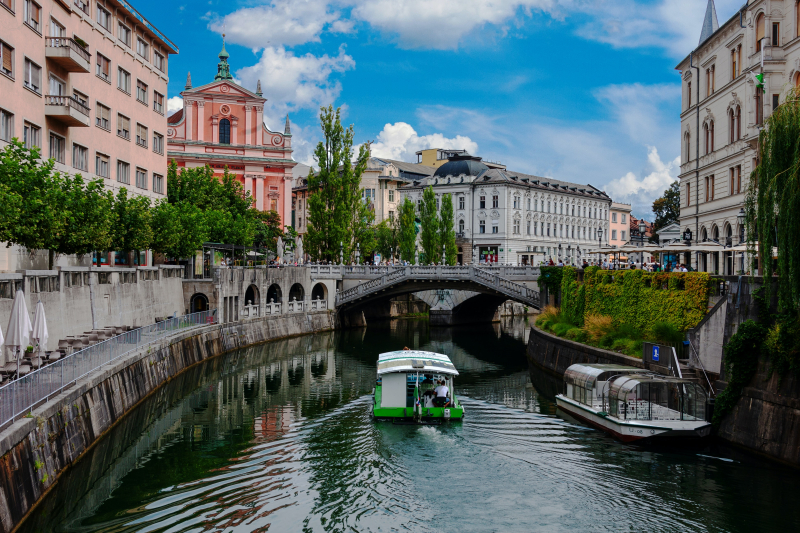
Image by Eugene Kuznetsov via unsplash.com 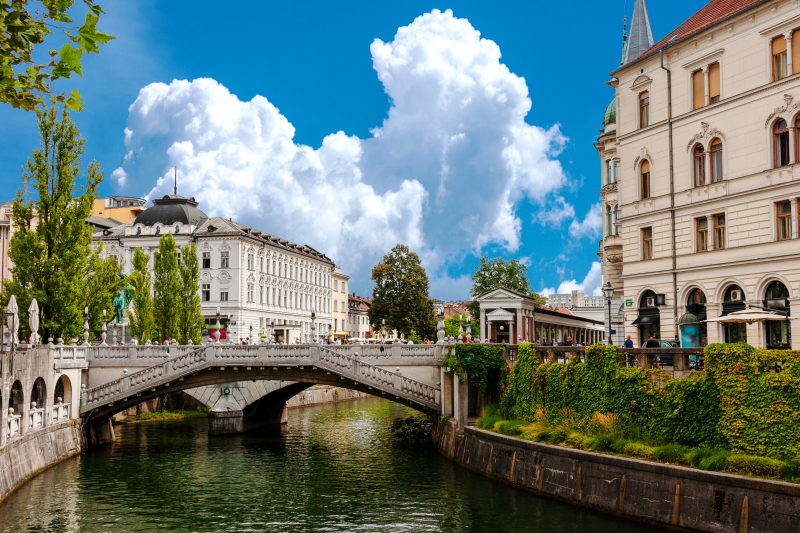
Image by Eugene Kuznetsov via unsplash.com -
Prešeren Square, which is close to the Ljubljanica, is where the city congregates and celebrates. There is a significant likelihood that this location will host an event if one is taking place in Ljubljana. This square is also a location of celebrations, carnavals, music, and even protests. The Franciscan Church of the Annunciation was constructed in the 17th century, which is when the Prešeren Plaza first appeared. St. Mary's Square was the initial name of the neighborhood, after the church. This is one of the Best Places to Visit In Ljubljana.
The square, which has a rough triangular layout and is where several important arteries meet, got its present luxurious aspect following the earthquake in 1895. The medieval homes that had previously stood here were replaced at this time, joining the 1795-built Baroque Church of the Anunciation. The poet France Prešeren, whose poem "Zdravljica," or "A Toast," became Slovenia's national song in the 19th century, is credited with giving the plaza its name. His statue is located close to the Central Pharmacy, across the street from Julija Primic, his unrequited love and inspiration.
Location: Ljubljana, Slovenia
Phone: +386 1 283 22 88
Opening hours: all day
Rating: 4.5/5.0, 2145 Tripadvisor reviews
Website: https://www.visitljubljana.com/en/visitors/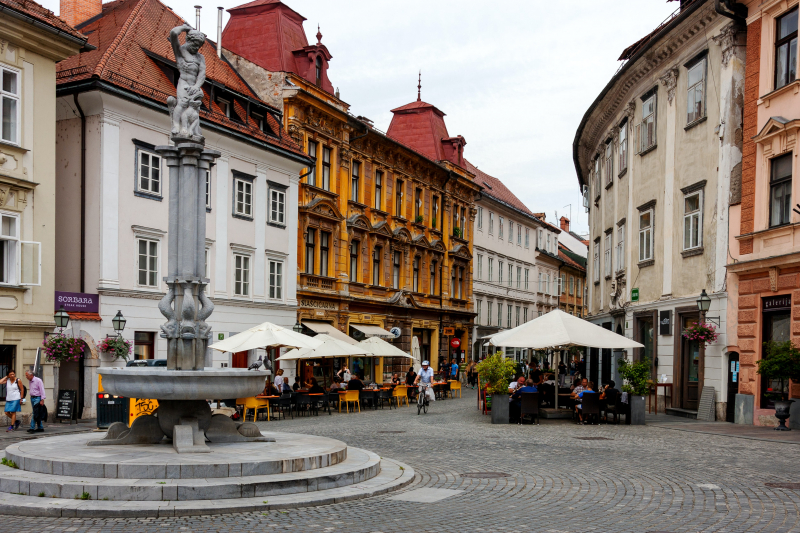
Image by Eugene Kuznetsov via unsplash.com Video by m_elnur1975 via youtube.com -
A quirky museum that transports you to the world of illusions and causes you to doubt your own eyes is located in a townhouse on Congress Square. The House of Illusions is a fun and instructive museum where you may experiment with your sense of perception. You experience relativity physically on the inside. The illusions give you a different understanding of space and everything you previously believed to be true about it. Although children may enjoy it the most, adults can also have a good time for around an hour here.
You'll wander from room to room, each with an odd activity going on: there's an Anti-Gravity Room where everything appears to float, or the disorienting Vortex Tunnel where it's difficult to maintain your equilibrium since it seems to whirl around you. Alternatively you can visit the Infinity Disco Room, where dancing and fun never end. Assembling the great mind games towards the end will put your intellect and endurance to the test.
Museum of Illusions features over 40 exhibits, holograms, and optical illusions. There are other smaller installations, including Albert Einstein's Hollow Face, Rubin's Vase, and the Mirror of Truth. Holograms and photographs morph, manifest, and vanish right before your eyes.
Address: Kongresni trg 13, Ljubljana 1000 Slovenia
Phone: +386 1 320 54 66
Opening hours: 9:00 AM - 9:00 PM
Rating: 4.5/5.0, 1075 Tripadvisor reviews
Website: https://www.houseofillusions.si/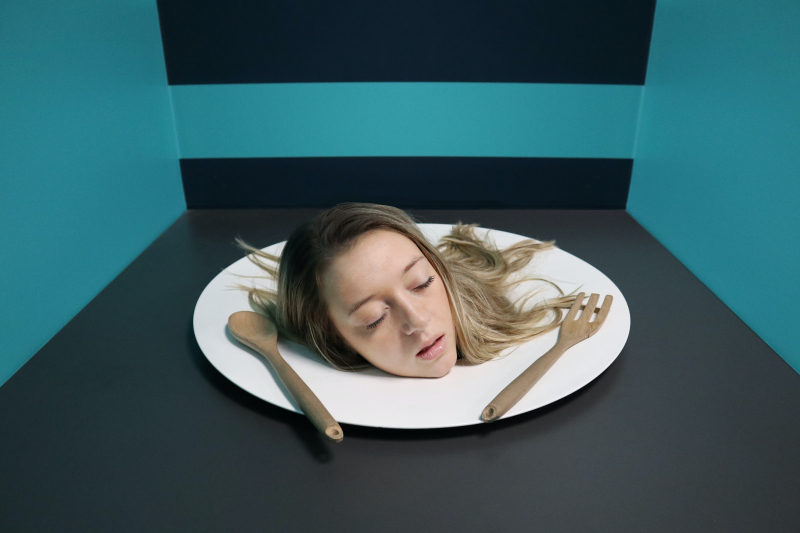
Image by Designecologist via pexels.com Video by Kieran Travels via youtube.com -
The Cathedral of Saint Nicholas, commonly known as Saint Nicholas' Cathedral, Ljubljana Cathedral, or simply the Cathedral (Stolnica), is a cathedral in Ljubljana, the Slovenian capital. Ljubljana Cathedral firstly had a Gothic structure. Due to fires and battles, this monument has undergone a few different forms since the 13th century. The existing Baroque design has been in place from the beginning of the 18th century.
The Cathedral of Saint Nicholas is a magnificent structure filled with works of art by numerous Italian Baroque artists. The interior's frescoes, paintings, and sculpture were created in the 18th century by artists such Francesco Robba, the Groppelli brothers, Angelo Putti, and Giulio Quaglio. The magnificent dome fresco, painted by Slovenian Matev Langus in 1844, and the main gateway door, whose relief depicts Slovenia's history, both are from recent periods.
Afterwards, a ton of other pieces of art were included. The dome fresco that Matev Langus created in 1844 is one of the more intriguing ones. The main entry door relief by Tone Demar, which depicts Slovenia's history and was commissioned to commemorate the 1250th anniversary of Christianity in Slovenia, and the side doors by Mirsad Begi, which feature bishop portraits, are among the most notable additions from the 20th century.Address: Dolničarjeva ulica 1 1000 Ljubljana
Phone: +386 1 234 26 90
Opening hours: unknown
Rating: 4.5/5.0, 1062 Tripadvisor reviews
Website: https://zupnija-lj-stolnica.rkc.si/
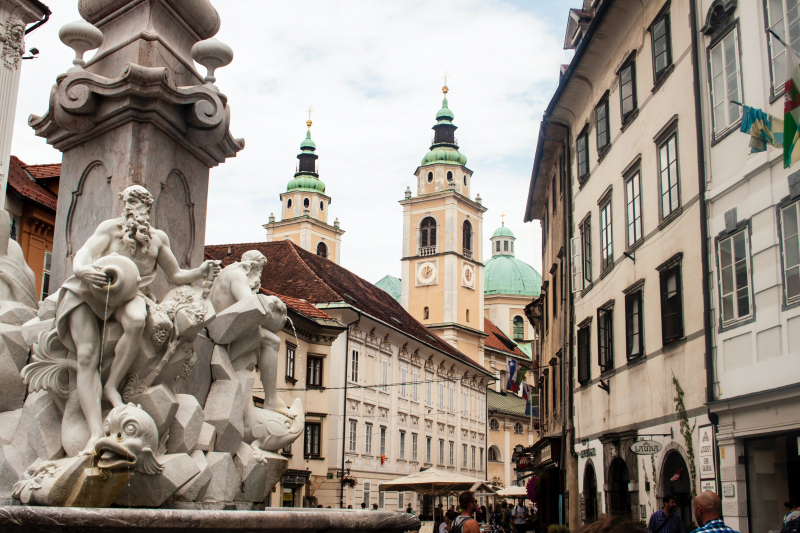
Image by Bram van Geerenstein via unsplash.com Video by Vic Stefanu - Amazing World Videos via youtube.com -
Franciscan Church of the Annunciation is one of the structures that have the biggest impact on how the Presernov trg Square, the heart of Ljubljana, looks. The monastery served as the residence for Augustine monks till the end of the 18th century. Between 1646 and 1660, the Church of the Annunciation was constructed. Its exterior, which was finished in 1700, reconstructed in the 19th century, and renovated in 1993, is ornamented with the largest Madonna statue in Ljubljana, a copper statue of St. Mary. The church is one of the Best Places to Visit In Ljubljana.
Franciscan Church of the Annunciation, built in the middle of the 17th century in an early Baroque style, is a serious presence on Preeren Square. The pastel color used to paint the exterior has special significance for the Franciscan order. It features pinnacles, pilasters with Ionic capitals, niches, and a figure of the Mother and Child on the pediment. It is one of the most beautiful structures in the square. The inside is richly decorated, but after the earthquake, cracks ruined the Baroque frescoes.
The church's main altar is a massive structure that Francesco Robba, a sculptor, erected in the middle of the 18th century. After the earthquake of 1895, the paintings painted by Matev Langus in the church's interior in the middle of the 19th century took on their current appearance. Matej Sternen frescoed the chapel ceiling between the years of 1935 and 1936.Address: Prešernov trg 4 1000 Ljubljana
Phone: +386 1 242 93 00
Opening hours: 07:00 - 21:00
Rating: 4.5/5.0, 676 Triphobo reviews
Website: www.marijino-oznanjenje.si
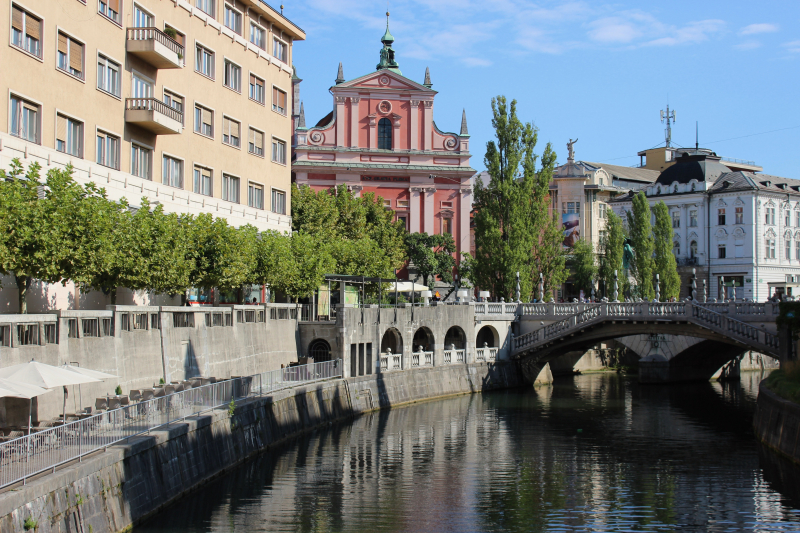
Image by Maja Miklic via unsplash.com Video by Vic Stefanu - Amazing World Videos via youtube.com -
The National Museum of Modern History has been housed in the distinctive baroque Cekin Castle building on the edge of Tivoli Park in Ljubljana since 1951. The interesting past residents of the castle, including the Italian viceroy Eugen Euharnais and the first family to make beer, the Kozlers, left a lasting impression on its history. The National Museum of Contemporary History, along with its permanent exhibition titled "Slovenians in the 20th century," and a number of temporary exhibitions, are now housed in the castle.
The First World War will be the starting point, followed by the turbulent interwar years, the Second World War, Tito's government, and Slovenian independence in 1991. Each time period is supported with actual artifacts and documentation, such as clothing, furniture, weaponry, medals, photographs from the past, farming equipment like an old tractor, and much more.
The Slovenian ethnic region's material and immaterial heritage from the turn of the 20th century to the present is preserved, studied, and presented by the museum. It preserves collections of items from the First and Second World Wars, items from the time between the two wars, items from the socialist era, and items from the time of the creation of the new state. Its collections include artwork and photos as well as museum artifacts, archive and library materials, and other materials. This museum is one of the Best Places to Visit In Ljubljana.Address: Celovska cesta 23 1000 Ljubljana
Phone: +386 1 300 96 10
Opening hours: 10:00 - 18:00
Rating: 4.5/5.0, 169 Tripadvisor reviews
Website: https://www.muzej-nz.si/en
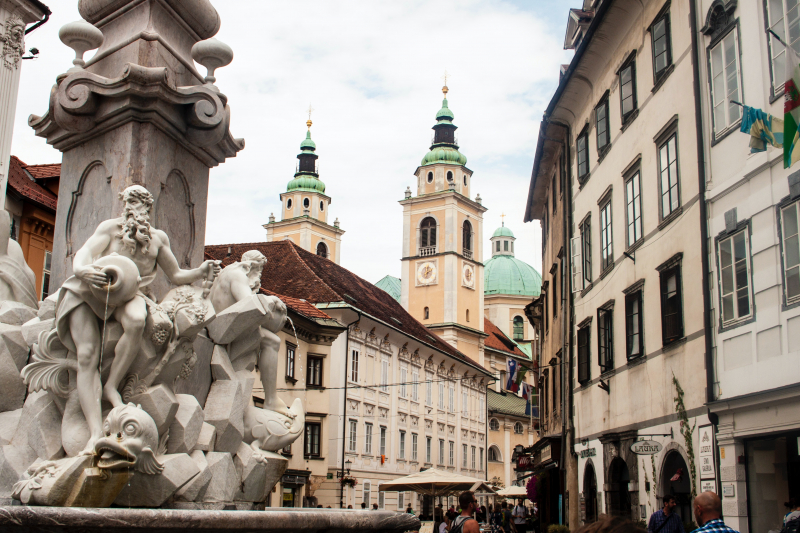
Image by Recep Tayyip Çelik via pexels.com (photo is used for illustration only) Video by Identity On The Light via youtube.com -
You can gain insight into the thoughts of Joze Plecnik, the architect who revitalized Ljubljana during the interwar period, on the subject of architecture. Plecnik aspired to transform Ljubljana into a contemporary version of Ancient Athens, and his influence on this city has been compared to Antoni Gaudi's in Barcelona. On Karunova Ulica, Plecnik left his home and studio complex nearly precisely as he had left it when he passed away in 1957. The architect's furnishings, tools, sketches, and other belongings - Plecnik House - are still there, and there are two residences next to each other and a garden with a lapidary collection.
The exhibition gives you a glimpse into Plecnik's life and work, with a special emphasis on the architect's works in Ljubljana, where he settled after a successful career abroad. First, in Vienna, where he produced several ground-breaking pieces of modern architecture, and then in Prague, where he, among other things, renovated Prague Castle after it had become the official residence of the Czechoslovak president.
The Plecnik Collection is made up of Plecnik's original furnishings, books, drawing instruments, personal possessions, and a sizable archive of sketches, plans, photographs, and models. Plecnik House is a complex of two neighboring buildings and an adjacent garden with a lapidary.
Address: Karunova ulica 4 1000 Ljubljana
Phone: +386 1 280 16 04
Opening hours: 10:00 - 18:00
Rating: 4.5/5.0, 117 Tripadvisor reviews
Website: https://mgml.si/en/plecnik-house/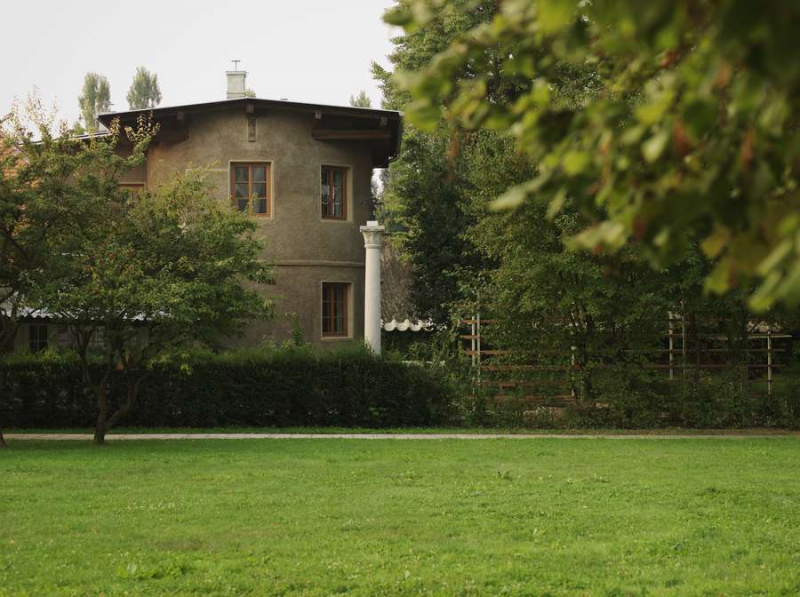
Image from website of Plecnik House Video by Paul Allen via youtube.com -
The Skyscraper Cafe offers some of the most breathtaking views of Ljubljana, which extend out in all directions. It is situated in the top of the Neboticnik building, a venerable specimen of architecture from between the two World Wars. One of Slovenia's most well-known pop songs, Na vrhu Neboticnika (On Top of the Skyscraper), presents a trip to the café at the top of the structure as the epitome of romance.
The Skyscraper, which was built in 1933 based on designs by Vladimir Subic, was at the time the ninth-tallest skyscraper in Europe and the tallest building in the Balkans. An even taller residential structure with Ljubljana's first contemporary shopping arcade was planned but never built next to the Skyscraper.
This 13-story skyscraper was among the ten tallest structures in Europe when it was completed in 1933, making it the tallest structure in the Balkans. At the time, it had central heating, air conditioning, and quick elevators, among other modern luxuries. Even today, the Skyscraper offers the most comprehensive view of Ljubljana, including the castle and mountains to the north like Smarna Gora. The skyscraper continues to fulfill its original function by housing a variety of stores, professional offices, and residential apartments on the sixth through ninth levels.
Address: Stefanova ulica 1 1000 Ljubljana
Phone: +386 40 233 078
Opening hours: 09:00 - 03:00
Rating: 4.3/5.0, 2787 Restaurant Guru reviews
Website: www.visitljubljana.com
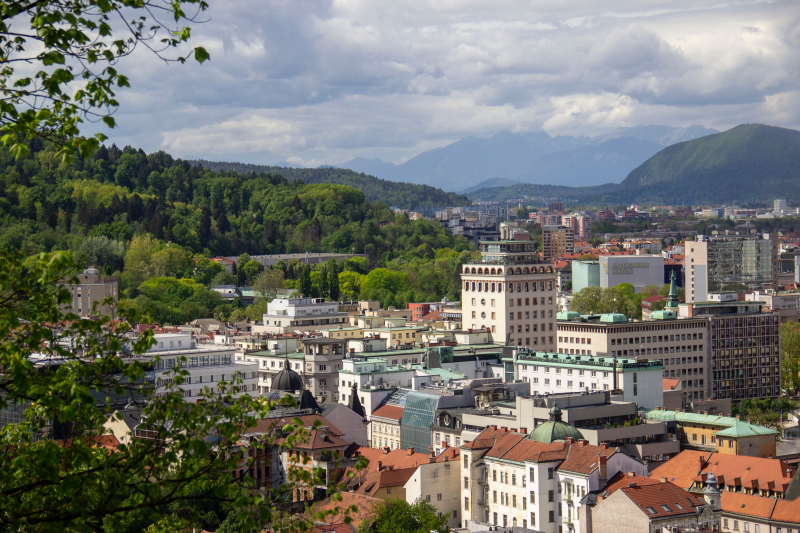
Image by Roxanne via unsplash.com Video by Jake Yorkman via youtube.com -
One of the city's biggest tourist destinations is Ljubljana Castle, which is perched on a hill and encircled by trees and commands a commanding view over the Old Town. The castle itself was built in the 11th century, but the majority of its structures and fortifications today date to subsequent decades, despite archaeological examinations showing that the mount has impressively been in continuous use from at least 1200 BC. Since the castle's construction began 900 years ago, a lot has changed. The early stone, wood, and stone fortification was replaced by more useful military structures, and in the 16th century it was transformed into an arsenal to serve as a local defense against an Ottoman invasion.
As a result, a wide variety of architectural styles are visible. It is definitely worth visiting the wonderful Slovenian History Exhibition if you want to understand everything there is to know about the castle and Slovenia's past. The breathtaking frescoes in the Chapel of St. George and the castle's imposing Watchtower, from which you can take in magnificent views of the city, are two of its other main attractions. Visitors are escorted through the most important eras in Ljubljana's history during this trip. Ljubljana Castle offers an interactive game with "escape room" components if you're seeking for a little adventure while touring the stronghold. You'll get the chance to complete several knightly challenges and maybe even save the fabled Ljubljana dragon!
Ljubljana Castle features a museum, two restaurants, restrooms, a coffee shop, and a gift shop. You can see some of Ljubljana's most stunning viewpoints from up here. You have two options for getting to Ljubljana Castle: either take the Urban Train or the funicular that runs from Krek Plaza to the top of the castle. You can also choose to walk there from Ljubljana's Old Town if your physical condition is good.
Address: Krekov trg 4 1000 Ljubljana
Phone: +386 31 349 555
Opening hours: all day
Rating: 4.0/5.0, 8236 Tripadvisor reviews
Website: https://www.ljubljanskigrad.si/
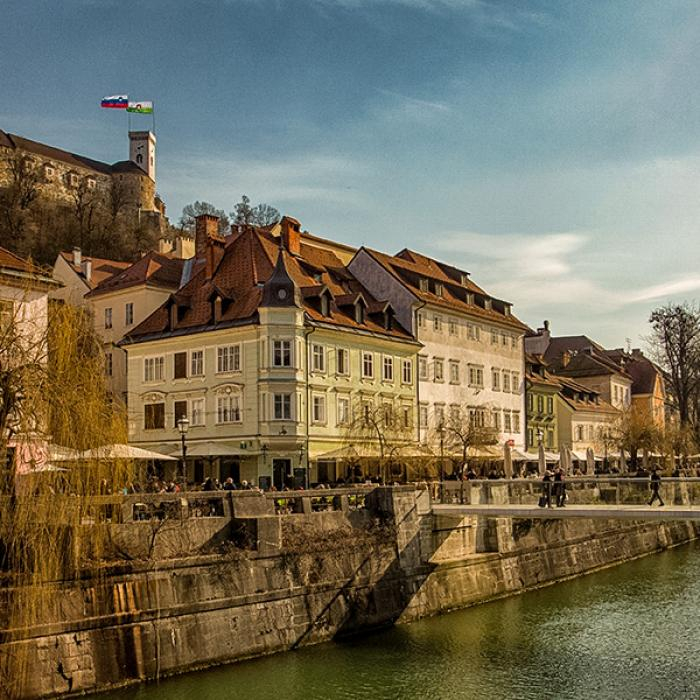
Image from website of Ljubljana Castle Video by Tom Hall via youtube.com -
The Dragon Bridge, which is studded with well-known dragon statues, may be seen in many pictures of Ljubljana. You can scarcely call yourself a visitor to Ljubljana if you haven't had your picture taken next to a Dragon Bridge dragon. When the bridge was built, people have been fascinated by the four dragon statues, which look somewhat frightening and almost real (assuming, of course, you think dragons might actually exist). This can be seen as one of the Best Places to Visit In Ljubljana.
Apart from the allure of the dragons, the Dragon bridge has a singular design that is regarded as a remarkable example of technological heritage and Art Nouveau architecture, a style that was popular at the turn of the 20th century. It was the first reinforced concrete building in Ljubljana and one of the biggest bridges of its sort ever built in Europe. It was built between 1900 and 1901. It was known as the Jubilee Bridge of Emperor Franz Joseph I when it first opened.
The Dalmatian architect Jurij Zaninovi, who studied under the renowned Viennan architect Otto Wagner and whose student was also Ljubljana's great architect Joe Plenik, gave the Dragon Bridge its Art Nouveau aesthetic. The balustrades, the dragon statues made of sheet copper, and the concrete slabs used to cover the reinforced concrete framework were all created by Zaninovi. The parapet lamps, which previously ran on gas, are also part of the bridge's original embellishments.Butchers' Bridge, a dilapidated wooden bridge that had existed there since 1819, was replaced with the Dragon Bridge. The municipal authorities chose a modern style and a reinforced concrete structure mostly for financial reasons because it was far less expensive to build with reinforced concrete than with the then-more-common stone.
Address: Petkovskovo nabrezje 31A 1000 Ljubljana
Phone: +386 1 306 12 15
Opening hours: all day
Rating: 4.0/5.0, 2697 Tripadvisor reviews
Website: https://visitljubljana.com/old-id/en/1914
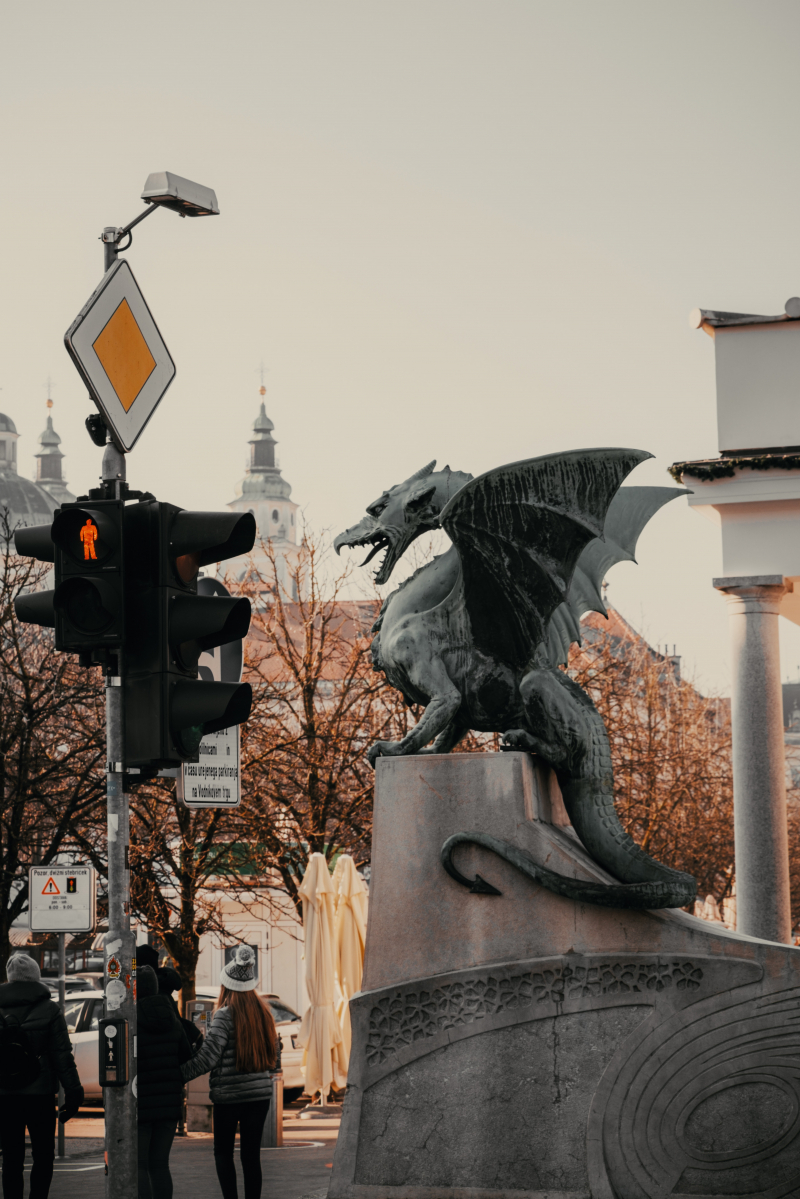
Image by Miraze Dewan via pexels.com 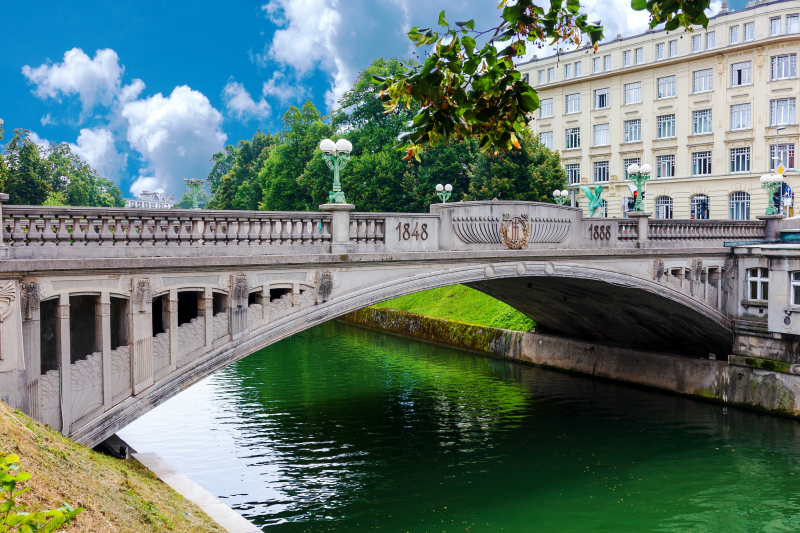
Image by Eugene Kuznetsov via unsplash.com -
Metelkova mesto, an alternative culture hub that originated as a squat in a disused army barracks and has since grown to be one of Ljubljana's most popular attractions, brings together a variety of various artistic activities and events. It is home to a sizable number of clubs that offer a regular schedule of performances by underground musicians and DJs from all over the world, as well as club nights and special events. Moreover, the center presents exhibitions, festivals, and artistic events. It attracts people on any night of the week because to its active daily calendar of events. The gathering is diverse and includes everyone from professionals out on a night out to tourists visiting Ljubljana and enthusiasts of underground music.
Metelkova mesto's history as a cultural hub dates back to 1993, when a group of about 200 volunteers squatted the northern portion of the barracks complex on the initiative of an independent organization of primarily underground artists and intellectuals known as Metelkova Network (Mrea za Metelkovo) to prevent the abandoned army complex from being demolished. After that, various well-known and obscure Slovenian artists made interventions in the former Austro-Hungarian army barracks, which were constructed in the late 19th century. The complex is constantly changing since it provides a thriving environment for a free creative spirit.
Address: Metelkova ulica 8 1000 Ljubljana
Phone: +386 1 300 06 80
Opening hours: unknown
Rating: 4.0/5.0, 835 Tripadvisor reviews
Website: www.metelkovamesto.org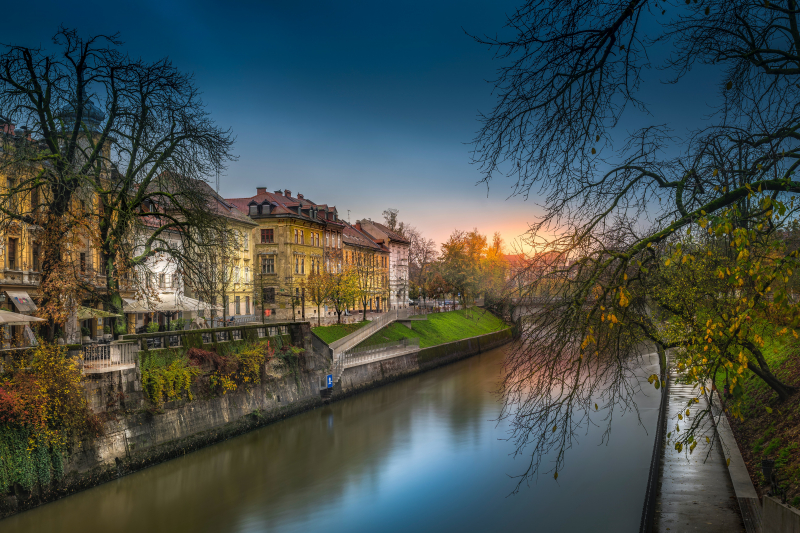
Image by Tadej Turk via unsplash.com Video by KAMS CREATION via youtube.com -
To reach the city zoo from Tivoli Park, continue down the lower slopes of Roznik Hill. Despite their diminutive stature, the animals have spacious, healthy environments because the attraction is surrounded by a hill's forest and meadows. At a special area where the Alps meet the Pannonian Plain and the Mediterranean, there are species from all over the world and a focus on maintaining Slovenia's wildlife. Ljubljana Zoo is one of the Best Places to Visit In Ljubljana.
There are more than 500 different animals in the Ljubljana Zoo, representing 119 different species. The cheetahs, sea lions, Asian elephants, and two Siberian tigers are the crowd-pleasers. At regular intervals throughout the day, you may see sea lions and pelicans being fed, and you can get to know the animals at a traditional Slovenian farm.
In addition to providing a cozy up-close view of more than 500 animals, the Ljubljana Zoo also provides a number of animal experiences or just the chance to enjoy seeing sea lions, big cats, giraffes, meerkats, and other animals at feeding time. On specific dates, you can even spend the night here if you bring your nighttime camping supplies! The Zoo also provides parents and other guests with a relaxing area as well as a very fantastic playground for the little ones. The canines are also welcome.Address: Vecna pot 70 1000 Ljubljana
Phone: +386 1 244 21 88
Opening hours: 09:00 - 17:00
Rating: 4.0/5.0, 449 Tripadvisor reviews
Website: www.zoo.si
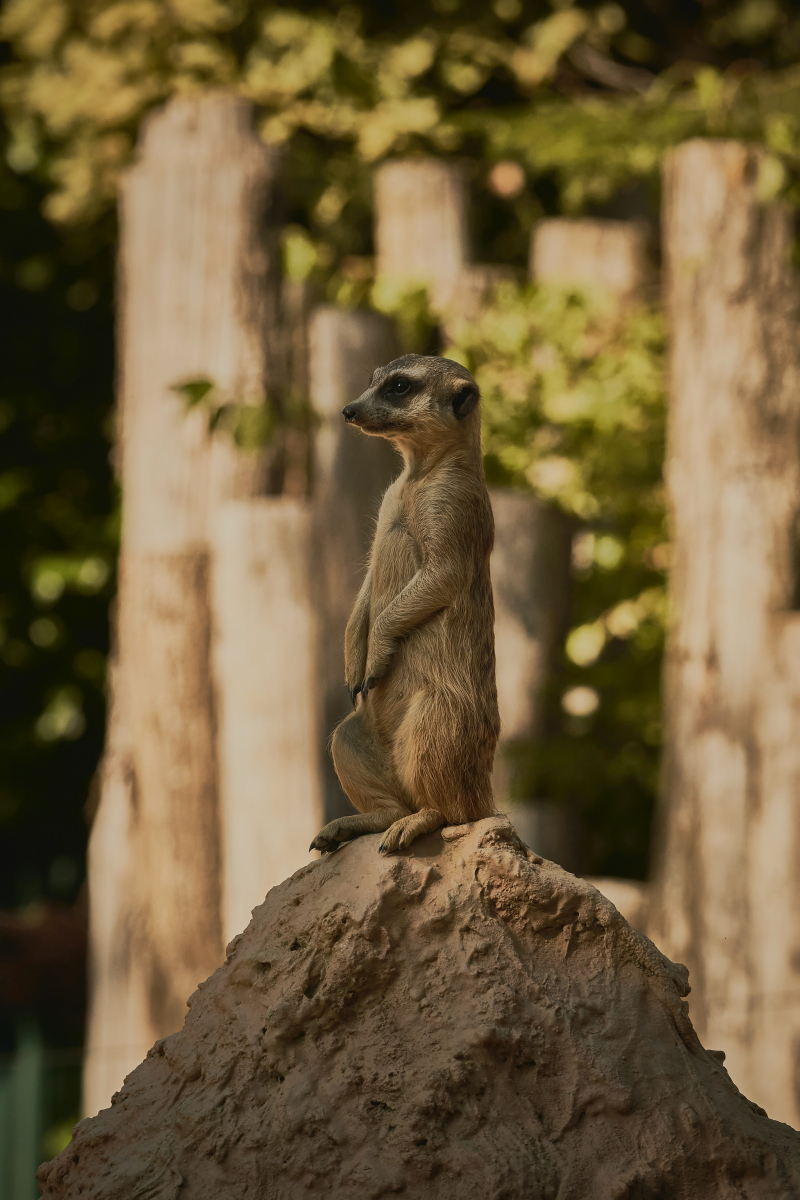
Image by Aljaž Kavčič via unsplash.com 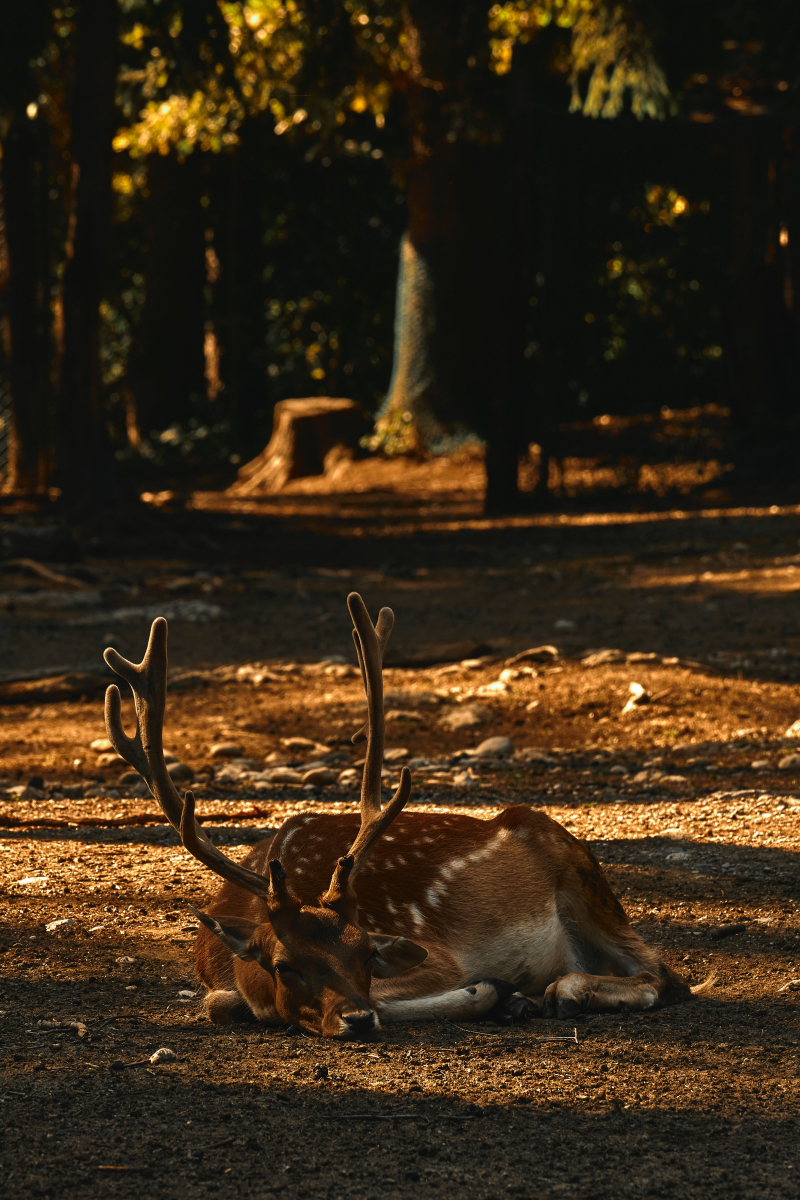
Image by Aljaž Kavčič via unsplash.com -
The Central Market in Ljubljana is more than just a store. It has historically traditionally served as a gathering spot for folks to socialize and have fun. The so-called "Plenik's Covered Market," which was constructed between 1940 and 1944 based on drawings by the architect Joze Plecnik, is envisioned as a two-story array of riverside market halls that follow the curve of the river. The upper story has businesses that sell Slovenian goods and attend to customers. A fish market, a small fish restaurant, and the DobraVaga Art Gallery are located at the lower level.
The Central Market is made up of a covered market sandwiched between the Vodnikov trg and Pogacarnev trg squares, two open-air markets in the squares itself, and a number of small food stores along the Ljubljanica River. Catering businesses and food carts round out the Central Market selection. The Pogacarjev trg square in Slovenia offers a unique food market every Friday from the middle of March to the end of October when chefs from Slovenian restaurants prepare a variety of delicacies from across the world. The Open Kitchen was canceled in case of inclement weather.The market offers a selection of tropical fruits, dry-cured pork products, balcony flowers, and plug plants in addition to the fresh fruits and vegetables cultivated by neighborhood farmers in Slovenia. Ecology Market is held in Pogacarjev trg Square on Saturdays. In addition to the weekly Open Kitchen, additional themed and gastronomic events are held here, such as From Countryside to City, Idee Italia, an Italian food market, Pivo & Burger Fest, etc.
Address: Adamic-lundrovo nabrezje 7 1000 Ljubljana
Phone: +386 1 230 61 00
Opening hour: 07:30 - 19:30
Rating: 4.0/5.0, 343 Tripadvisor reviews
Website: www.lekarnaljubljana.si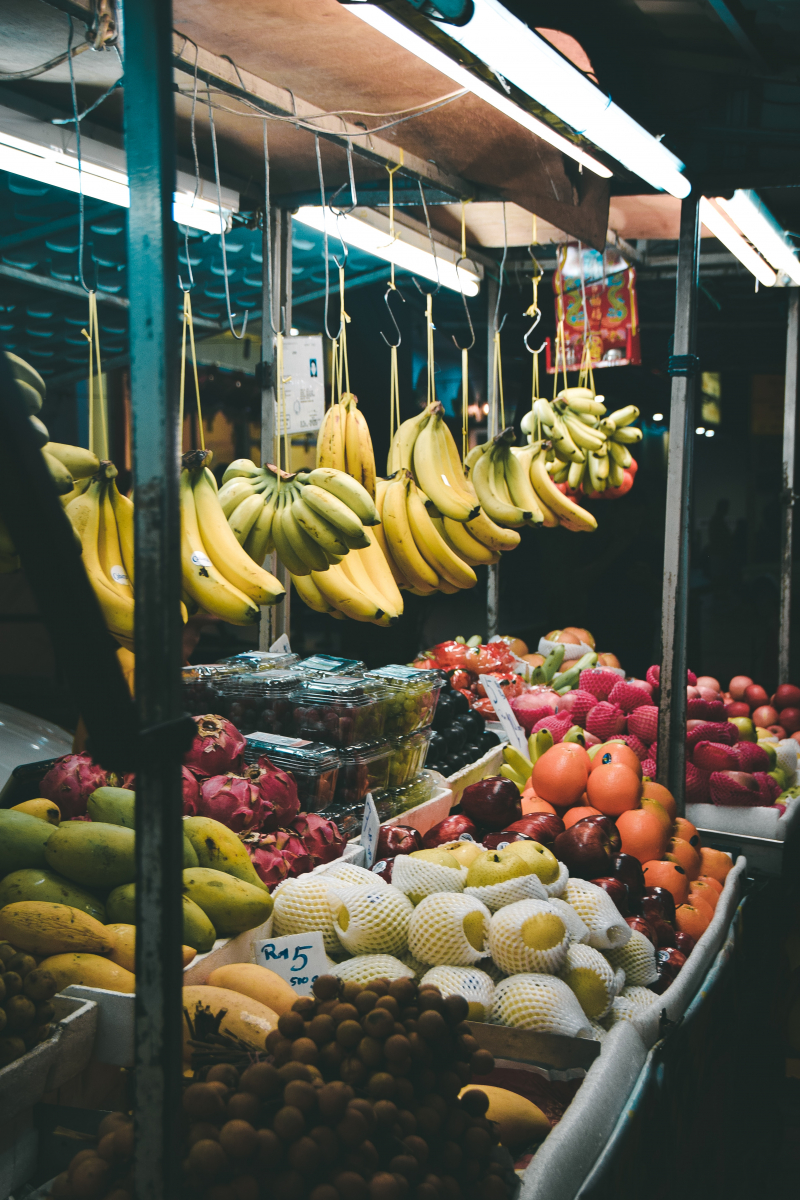
Image by Mahdiar Mahmoodi via unsplash.com Video by add7 Sakae via youtube.com -
The main art museum in Slovenia is the National Gallery of Slovenia (Narodna galerija), which houses the largest collection of works by visual artists from the late medieval era to the twentieth century. It is housed in a Revivalist palace from the late 19th century with contemporary additions constructed in the early 1990s and 2001. More than 600 pieces are available for viewing, ranging from Gothic liturgical artwork to works by Italian Baroque artists and sculptors who won numerous commissions in Ljubljana in the 1700s.
Moreover, works by Rihard Jakopi, Ivan Grohar, and Matija Jama provide insight into the Slovenian Impressionist movement. The Francesco Robba's Fountain of Three Carniolan Rivers, however, stands out as a particular highlight. The most famous fountain in Ljubljana's original sculpture was moved to the contemporary glass expansion for weather protection.
Use the free smartphone app Nexto Guide to navigate through 8 centuries of Slovenian art when you visit the Permanent Collection with an English-language audio tour in National Gallery of Slovenia. Keep an eye out for the changing exhibits and the Zoran Music-themed exhibition spaces, enjoy a break in a cozy café, browse the museum gift shop, and let the green dwarf Gal welcome young guests to his magical abode concealed in the Gallery's oldest section. Draw in the gallery while you take in the original artwork for a unique gallery experience!Address: Cankarjeva cesta 20 Prešernova 24, Ljubljana 1000 Slovenia
Phone: +386 1 241 54 18
Opening hours: 10:00 - 18:00
Rating: 4.0/5.0, 192 Tripadvisor reviews
Website: https://www.ng-slo.si/si/
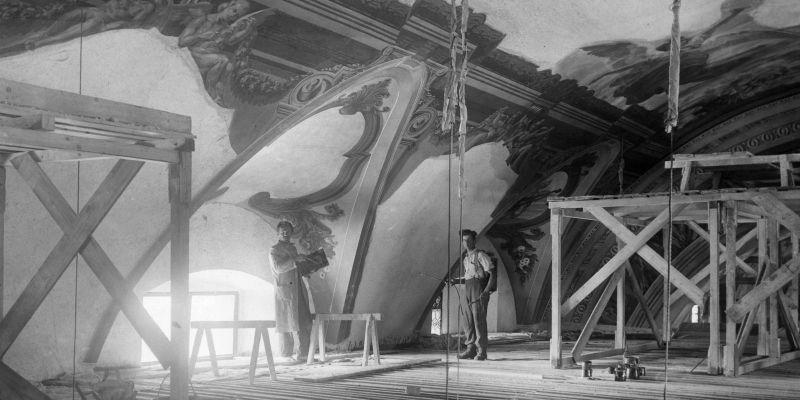
Image from website of National Gallery of Slovenia Video by Tribo Geek via youtube.com -
The National Museum of Slovenia is the country's biggest and oldest museum. In 1821, it was founded. The museum palace, located in the heart of Ljubljana, was the nation's first structure devoted only to the arts when it was constructed in 1888. The ongoing archaeological exhibit illuminates Slovenia's distinctive past. The earliest musical instrument ever discovered, the 60,000-year-old Neanderthal flute, and the situla from Vace are just a couple of the amazing displays you may view there.
The National Museum, which houses a variety of Slovenian artifacts regarded to be significant treasures of the global cultural heritage, is Slovenia's primary national history museum. The National Museum of Slovenia is housed in a neo-Renaissance palace that was constructed between 1883 and 1885 following Viljem Treo's designs and is conveniently positioned. The Provincial Museum of Carniola, the institution that gave rise to the Museum, was established in 1821.
The main exhibition is located on Preernova Street, and the applied arts department has a new facility on Metelkova. There are some incredible artifacts to look out in the former that date all the way back to prehistory. One is an object that was carved from a bear femur 60,000 years ago and is thought to be a piece of a Neanderthal flute (Divje Babe Flute). Models, animated movies, and unearthed artifacts like a treasure of coins reveal Ljubljana's Roman past as the city of Emona. The lapidarium, which has 200 inscribed stones on the ground floor and in a glass pavilion, is the most fascinating of these.
Address: Muzejska ulica 1, Ljubljana 1000 Slovenia
Phone: +386 1 300 96 10
Opening hours: 10:00 - 18:00
Rating: 4.0/5.0, 132 Tripadvisor reviews
Website: https://www.nms.si/si/
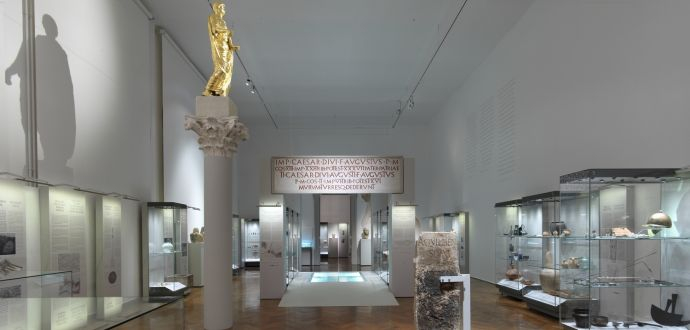
Image from website of National Museum of Slovenia Video by Prirodoslovni muzej Slovenije Ljubljana via youtube.com

















